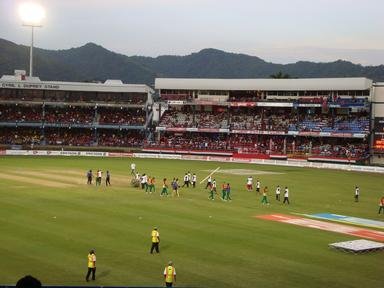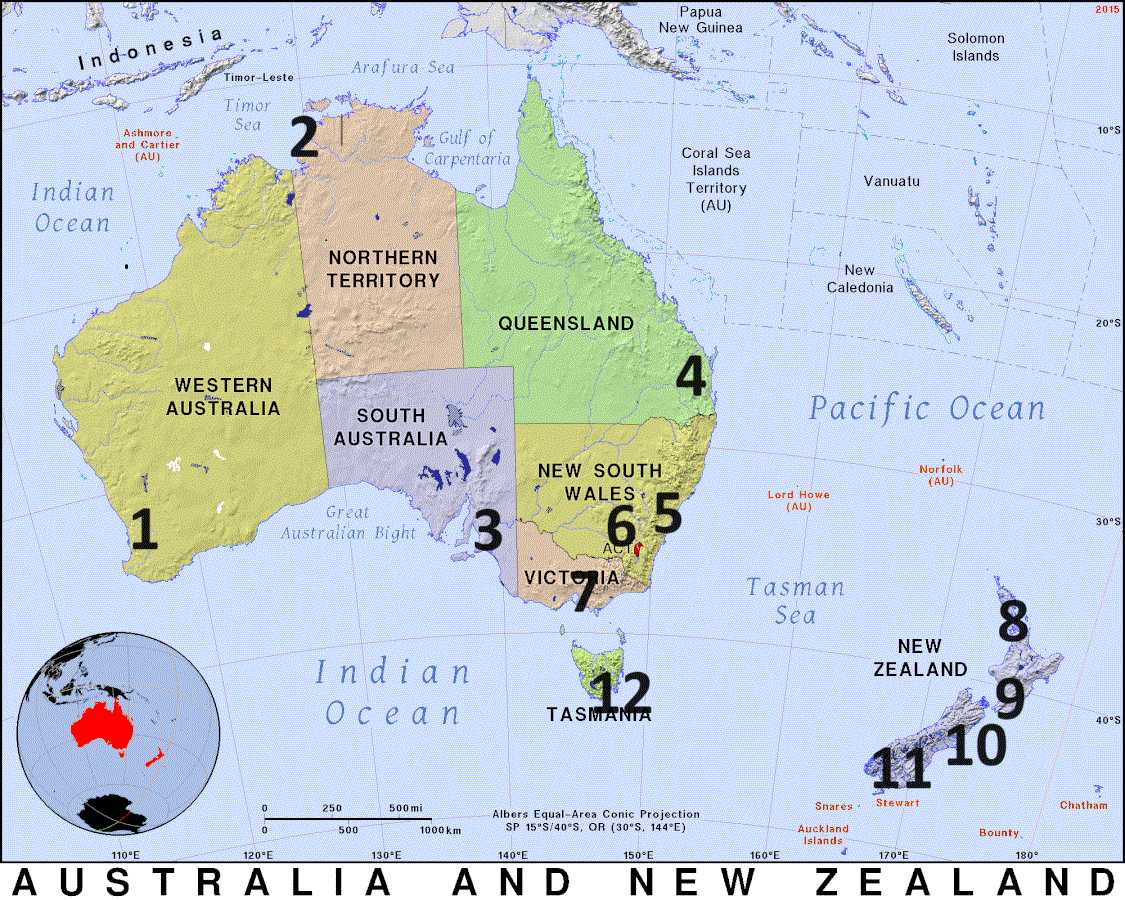
Cricket Grounds Down Under Trivia Quiz
Australia and New Zealand Cricket Grounds
Can you place these twelve grounds, all of which have hosted international cricket matches, in the right spot on the map? The names of the original parks are used, not the naming rights of stadiums, which change over time.
A label quiz
by looney_tunes.
Estimated time: 3 mins.
- Home
- »
- Quizzes
- »
- Sports Trivia
- »
- Cricket
- »
- Cricket Grounds
